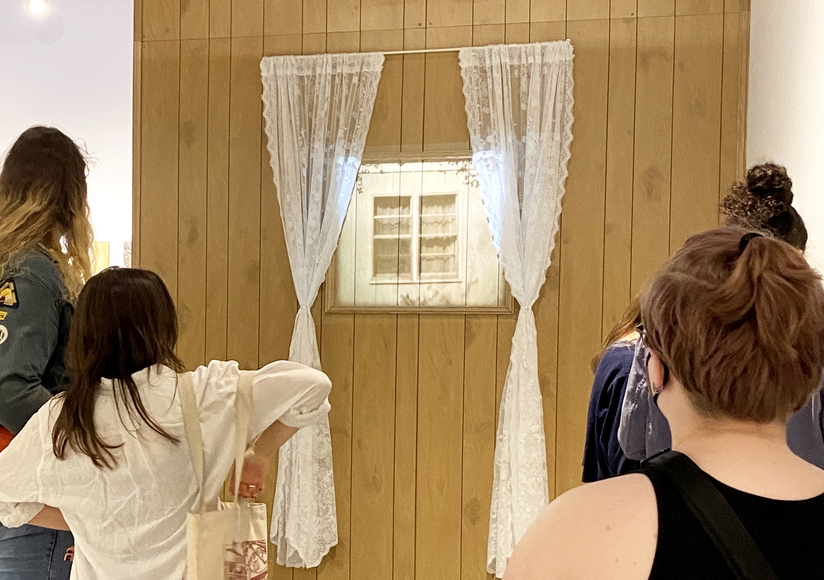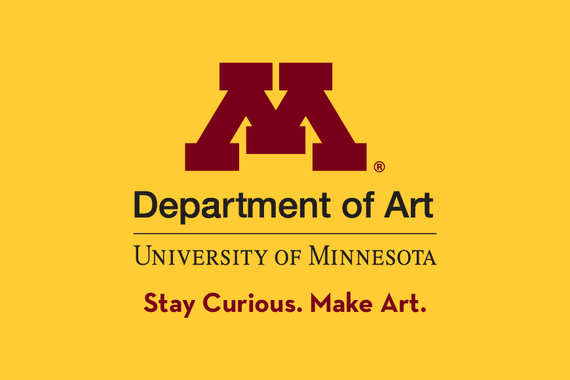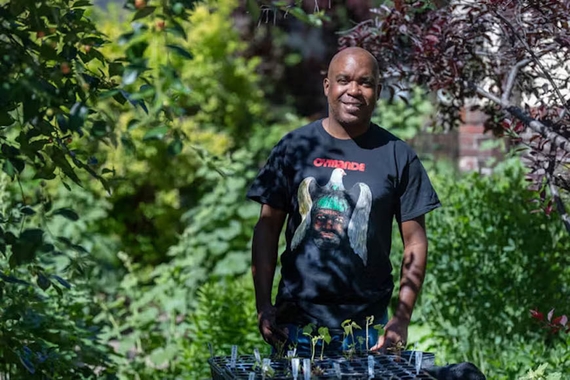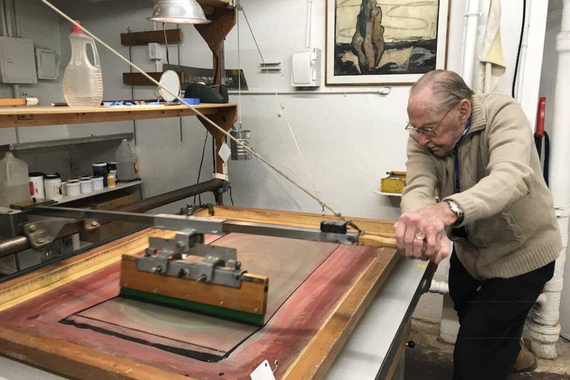Thinking back on 'post-'
post-, the culminating show for 28 Bachelor of Fine Arts graduates at the University of Minnesota, is a contemplation of what comes after. Works in the exhibition explore themes of life after environmental devastation, futures made possible by imagination, and the other side of transformation. A timely message in the socio-political and environmental landscapes of today, post- seeks to build a world that is responsive to its problems. While the cohort explores a variety of media and thematic ideas, a general voice of hope for the future emerges from the work as a whole.

Graduating senior Dez Bilges comments on their work in the show (in detail at right), stating, “These pieces act as portals to a reality in which transformation, growth, and regeneration are not only possible but prioritized.” A non-binary mixed media artist from South Minneapolis, Bilges typically works with figurative representations of intimate interactions between people. In one of their latest illustrations entitled Buzzers, Bilges captures a moment in which they shave their friend’s head. Both figures are surrounded by bioremediation plants, indicating the removal of toxins incurred by human infrastructure. This fleeting image transcends its literal import, becoming instead a representation of transformation that is held dearly by the queer community. It is not only a commentary on the power of personal metamorphosis, but offers a new beginning for future generations.
Also working within the realm of environmental commentary, Nikki Praus contorts soil into poetic calls-to-action that leave the viewer with a sense of personal responsibility for their impact on the environment. Praus states, “The work serves as a montage of this grief-ridden, wonderful, decomposing, birthing, ever-loving, ever-hurting, ever-evolving landscape that will hopefully inspire us to heal.” Harnessing the abject as a way to capture attention, Praus’s practice brings dirt into the gallery as a way to critique the human imprint on the environment. While the artist acknowledges that her medium of dirt is not usually considered acceptable in a fine art setting, the statement reciprocally makes us consider the anthropogenic footprints that in turn should not be in the natural world.
Making work about love and loss, care and regret, Kruz Karstedt is an experimental filmmaker who translates psychological experience into the physical reality of video as a way to grasp the multiperceptional truths of life. On truth and experience, Karstedt states, “The world exists in our minds as subjective perceptions of intimate experiences. . . . My work seeks to understand similarities and differences in our epistemological understandings of the world by inciting discussion rather than creating an echo chamber.” Karstedt’s work bridges the gap between individual and community by creating reflections of internal experiences to better understand the distinct realities of those around us.

Building her practice on inherited aesthetics and familial archival processes, Eleanor McKenzie Stevenson investigates domestic craft through photography, printmaking, and installation (pictured at left). She comments on her practice, stating, “I grew to understand art as both a necessity and a coping mechanism. As I prepare for life post-404, I reflect upon all it has given me. The process of archiving allows me to breathe life into the past, hold dearly to the present, and look toward the future.” Time and aesthetics go hand-in-hand in her work as she uncovers the ways stylistic decisions can become stand-ins for personal values passed down through generations. Her query into this topic leaves us with the question what comes next in the evolution of domestic practices.
Channeling her practice toward motherhood and postpartum caretaking, Dutch artist Maria Oostra is a weaver-seamstress engaging in dialogue with centuries of textile history. She uses weaving as “a means to imagine possible futures,” using intuitive movements to create fabrics and paintings reflective of her temporal position. While her painting and textile works are separate practices, they are joined by the shared aesthetic of loose gestural lines both in the figures of her paintings and the non-traditional expressiveness of her weavings. Oostra’s work embodies her approach toward art and life, sewing together disparate elements into a single form, both cohesive and sundry in its complexities.
Learn more about each member of the BFA 2022 cohort in the exhibition press release and how post- is embodied in each of their works. While the show indicates the culmination of their undergraduate studies here in the Department of Art, it is also an indication that this is only the beginning.
Detail of artwork in the exhibition by Julia Reising and Anna Carlson


